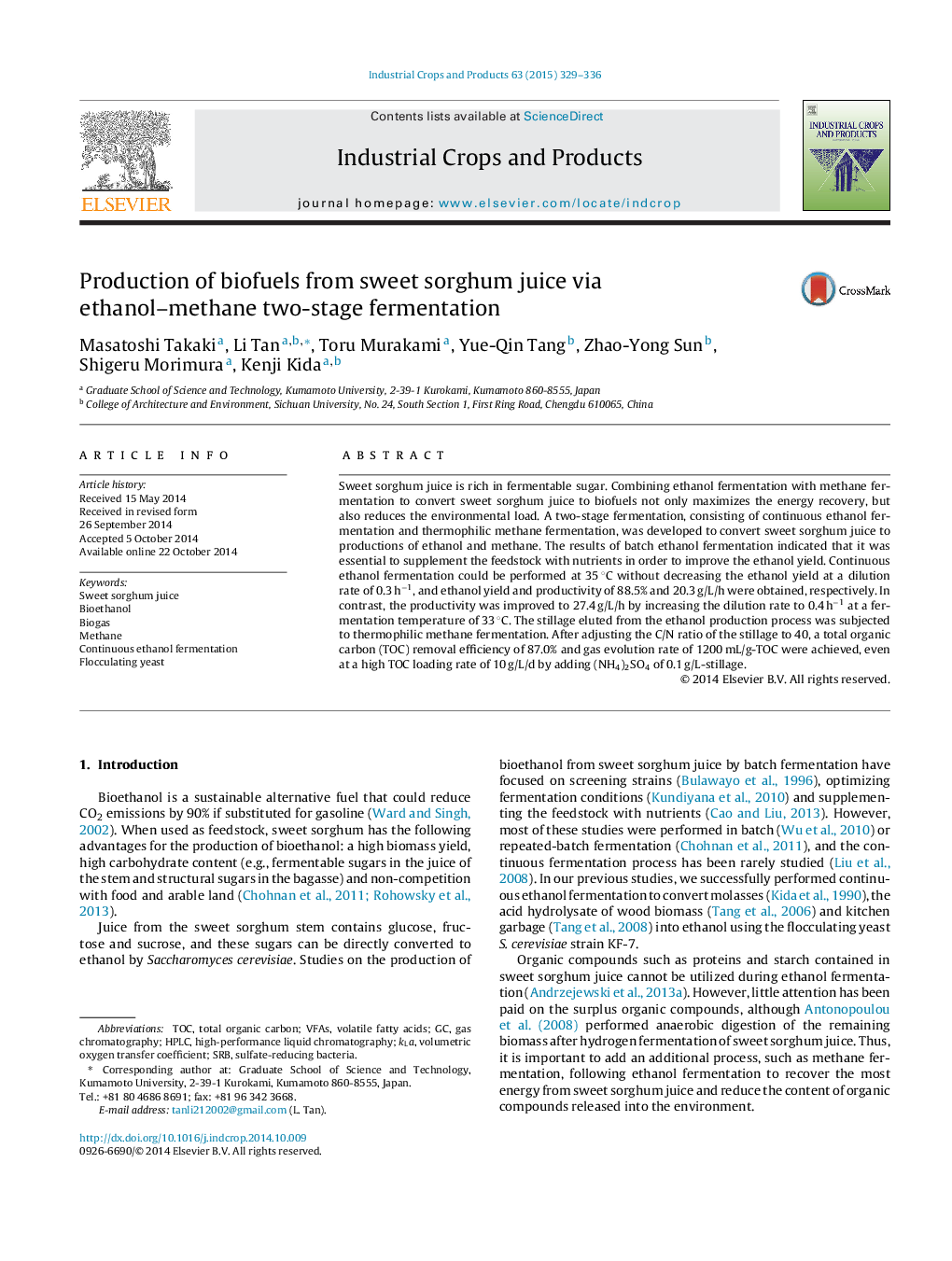| Article ID | Journal | Published Year | Pages | File Type |
|---|---|---|---|---|
| 4513276 | Industrial Crops and Products | 2015 | 8 Pages |
•Ethanol and biogas were efficiently produced from sweet sorghum juice.•Ca2+ enhanced cell flocculation and retained >109 cells/mL in continuous fermentor.•Aeration improved the cell activity and ethanol yield was 88.5% even at 35 °C.•High C/N ratio of stillage negatively affected the methane fermentation.•SO42− improved TOC loading rate to 10 g/L/d by coculture of SRB and methanogens.
Sweet sorghum juice is rich in fermentable sugar. Combining ethanol fermentation with methane fermentation to convert sweet sorghum juice to biofuels not only maximizes the energy recovery, but also reduces the environmental load. A two-stage fermentation, consisting of continuous ethanol fermentation and thermophilic methane fermentation, was developed to convert sweet sorghum juice to productions of ethanol and methane. The results of batch ethanol fermentation indicated that it was essential to supplement the feedstock with nutrients in order to improve the ethanol yield. Continuous ethanol fermentation could be performed at 35 °C without decreasing the ethanol yield at a dilution rate of 0.3 h−1, and ethanol yield and productivity of 88.5% and 20.3 g/L/h were obtained, respectively. In contrast, the productivity was improved to 27.4 g/L/h by increasing the dilution rate to 0.4 h−1 at a fermentation temperature of 33 °C. The stillage eluted from the ethanol production process was subjected to thermophilic methane fermentation. After adjusting the C/N ratio of the stillage to 40, a total organic carbon (TOC) removal efficiency of 87.0% and gas evolution rate of 1200 mL/g-TOC were achieved, even at a high TOC loading rate of 10 g/L/d by adding (NH4)2SO4 of 0.1 g/L-stillage.
